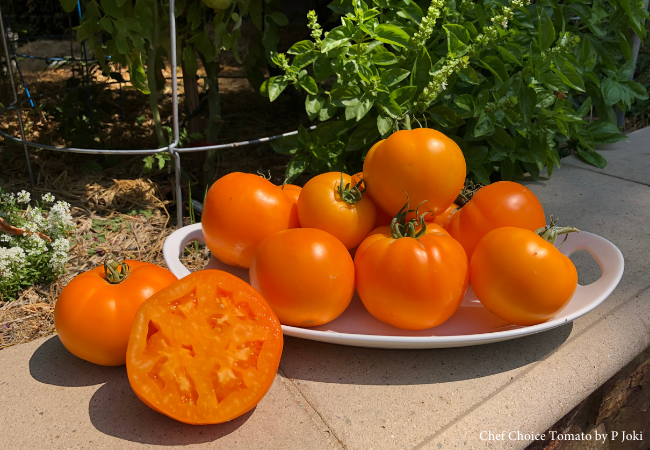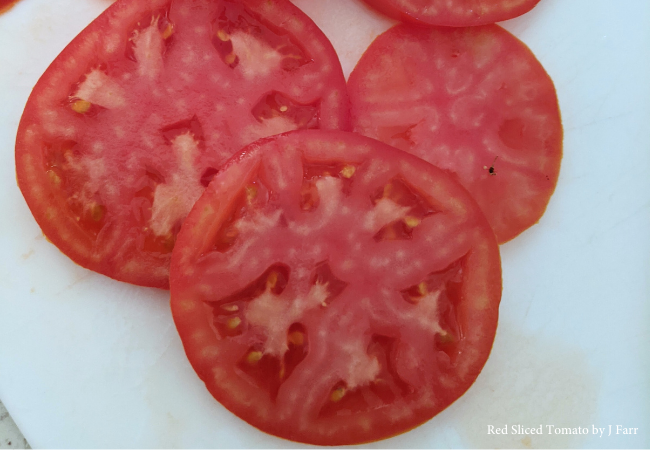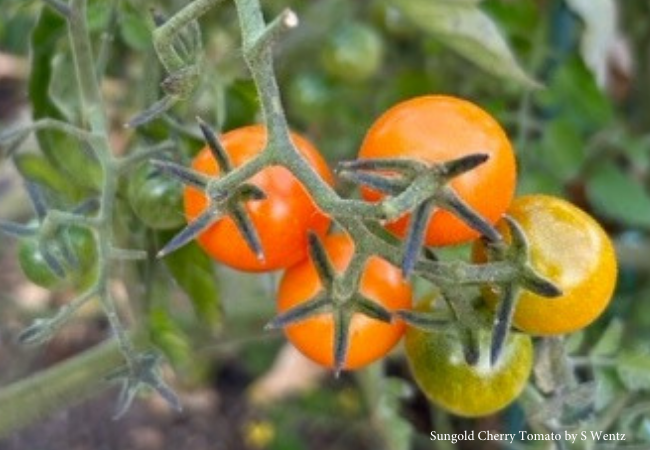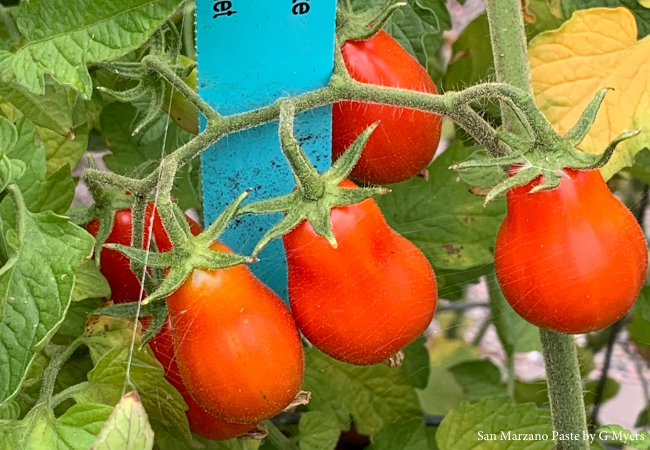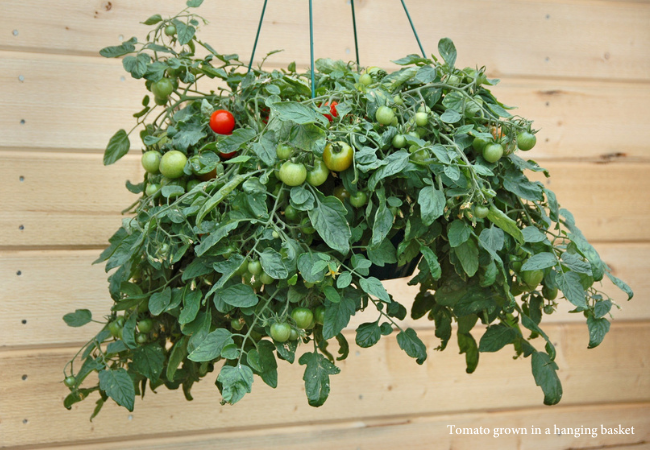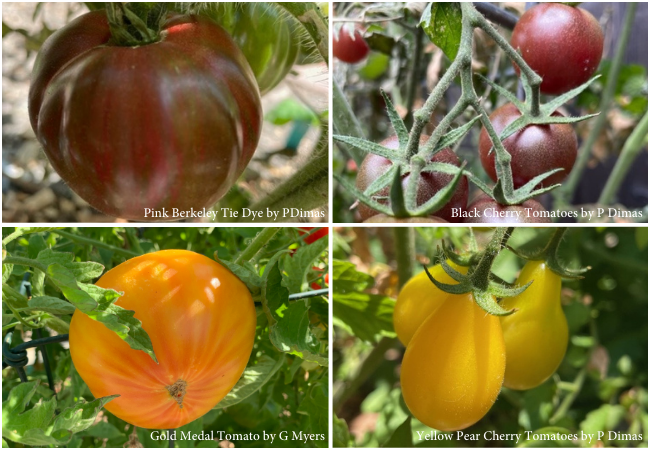- Author: Diane Allen
Spring is quickly approaching! To aspiring and experienced gardeners alike, that means it's time to begin the fun of choosing what to plant. This often includes which tomatoes to try, both old favorites and also some of the newer varieties.
There are so many tomatoes to choose from – how to even begin? Well, among other factors that can influence your choices, here are four key points to consider: Use, Growing Space, Climate and Disease Resistance. Even seasoned vegetable gardeners should find these four reminders helpful in choosing for tomato growing success!
Use
How will you be using your tomatoes? For fresh eating, as in salads or sandwiches? Making tomato sauce? Or perhaps you would like to sun-dry or can your tomatoes? There are types of tomatoes that are best suited for each of these different uses.
For fresh eating, vine-ripened large beefsteak and hybrid standard-size tomatoes are flavorful and good for slicing. Beefsteak tomatoes are especially large, and have smaller seed cavities than many other tomatoes, making them easier to slice. Somewhat smaller, round hybrid tomatoes like Early Girl are also delicious to eat fresh and generally ripen earlier than the larger beefsteaks. Standard-size tomato varieties also come in many different colors and color patterns!
Cherry tomatoes are small and often very sweet. Common varieties of sweet cherry tomatoes include Sun Gold, Sweet 100s and Sweet Million. They are fun to eat whole, even right off the vine. There are cherry tomato varieties in different colors that make a fun addition to salads and other fresh dishes. As a bonus, cherry tomatoes are also typically easy to grow! They freeze well and roasting them before freezing enhances their flavor.
Making tomato sauce? Roma, or paste tomatoes have a smaller, oval shape, thicker skins and lower water content than other types. For this reason, they are well suited for making tomato sauce. The thicker skins make them easier to peel and the lower water content results in less cooking time to reduce the liquid to a thicker consistency. Other tomato varieties with an elongated “plum” shape that are good for sauce and salsa are Amish Paste and San Marzano. All of these plum-shaped tomatoes are also good for drying due to their lower water content.
No matter how you like to use your tomatoes, you'll find many different varieties to try for each of these sizes and types. Be sure to try a new variety when you can; you may discover a new favorite!
Growing Space
You can grow tomatoes in any part of your garden or patio that has sun, but the amount of space you have available will help you in choosing which varieties to grow.
Tomato plant varieties have a wide spectrum of sizes. A large garden space or raised bed can accommodate any size of tomato plant; the larger varieties grow up to 5-6 feet tall and spread just as wide if not trimmed or supported upright. Just remember to allow at least 3-4 feet between plants of larger varieties to ensure air circulation and to reduce the spread of any diseases. Their size may limit how many plants you can or may want to dedicate to your tomato patch.
On the other end of the size spectrum, compact bush cherry tomatoes like Tiny Tim may only be 12 inches tall and 14 inches wide when grown in pots (a little larger when planted in the ground). These are perfect for patio and deck pots. You will still want to keep 18-24 inches between plants.
Determinate vs indeterminate
Tomatoes are described as determinate or indeterminate based on the plant's growth habit. This is another characteristic that affects the size of the mature plants and can help you choose the plant best suited for your growing space.
Determinate, or “bush,” tomato varieties have a somewhat bushy appearance, grow to a given size (between 3 to 5 feet), bear most of their fruit within 4 to 6 weeks, and then decline in vigor. Most early-ripening and canning tomato varieties are of the determinate type, as are some varieties that do well in containers. If you have limited space, determinate tomatoes have the advantage of being somewhat smaller than indeterminate plants.
Indeterminate varieties produce vines that continue to grow and set fruit all summer until they die from cold weather or disease. Many typical standard-sized and cherry tomatoes for the home garden are indeterminate varieties. Indeterminate plants can grow more than 5 feet tall and wide, and require much more space to grow. Left to grow without support, indeterminate plants also tend to sprawl on the ground, leaving the fruit susceptible to rot where it comes in contact with the soil. So support these plants with sturdy trellises, cages, or stakes. The branches of indeterminate plants can also be trimmed to help contain their spread, with acceptable sacrifice of fruit yield.
Bush varieties
Will you be growing your tomatoes in containers on your deck, balcony or patio? There are smaller, determinate bush varieties that do well in pots too! These include cherry tomato plants, such as the varieties Toy Boy and Small Fry. Better Bush VFN produces larger, good-sized fruit on compact plants growing 3-4 feet tall. It has more of an upright growing habit and does very well in pots.
Climate
Alameda County covers a large area, with vastly different local micro-climates. The cities in the western part of the county near the San Francisco Bay have cooler summer temperatures with some fog, while the eastern part of the county has dry, higher summer temperatures. Even within your yard you may find micro-climates. Your open unshaded areas may have a full day of direct sun and higher temperatures; more shaded areas of your garden will have fewer hours of sun and cooler temperatures. The average summer temperature of each of your growing areas is an important factor in the type of tomato that will be successful in that location.
Whatever your local climate, remember to also ask your neighbors what they are growing successfully. It's fun to exchange information and compare notes, and you may learn about a variety new to you!
Hot summer climates
Many of the larger beefsteak tomatoes, for example, require hot summer temperatures and have 75-100 days to maturity (i.e. the number of days it takes for the plant to become mature and to produce fruit). Even in the hot summers of the eastern part of the county, such as in Livermore, some beefsteak tomatoes will not ripen fully due to the time it takes to mature. To achieve more predictably good results in eastern Alameda County, you may want to plant beefsteak and hybrid tomatoes with 85 or fewer days to maturity.
Note that very hot weather can cause problems for tomatoes too. If temperatures are over 90 degrees for extended periods of time, tomatoes may drop their blossoms and the tomatoes can become sunburned while ripening. There are varieties that do well even during hot spells, such as Celebrity standard-sized and Sun Gold cherry tomatoes. You may want to try these if your garden experiences frequent hot temperatures.
Cool Summer Climates
Conversely, if you live near the bay or in the western part of the county, you may have average summer temperatures reaching only 67 to 75 degrees, and possibly some fog. But do not despair! Although tomatoes need sun to ripen, there are many varieties that do well in cooler temperatures. These are primarily those that reach maturity more quickly (50-70 days to maturity.) Using varieties with fewer days to maturity will give your harvest a longer time to ripen in your cooler climate.
Recommendations from the Master Gardeners Lake Merritt Trials Garden in Oakland over the past 10 years have included:
Cherry Tomatoes:
- Sungold: medium, orange cherry, great flavor, excellent yield, disease resistant; Sweet 100 or Sweet Million: small, red cherry, good flavor, good yield, disease resistant
Standard Tomatoes:
- Early Girl or Summer Girl: medium, red, great flavor, excellent yield, disease resistant;
Stupice: small, red, sweet flavor, excellent yield, disease resistant
Disease Resistance
Tomatoes are susceptible to several diseases that can reduce fruit yield or even kill your tomato plants. However, many hybrid varieties are resistant to these infections.
Some of the most common of these diseases are Fusarium wilt, Verticillium wilt and Tobacco Mosaic Virus. Hybrid varieties that are resistant to these diseases are fairly easily found. Look for the disease code letters on the tomato plant label next to the tomato variety name. Typically, the code is just the first letter of the disease, such as “F” for Fusarium, “V” for Verticillium wilt, “T” for Tobacco Mosaic Virus and “N” for nematodes. For example, “Super Sweet 100 Hybrid VF” indicates that the plant is resistant to both Verticillium and Fusarium wilt diseases. If you are growing your plants from seed, look on the seed packet for the code letters or a statement about resistance.
Note that disease resistance does not mean that the plant is completely immune to the disease noted. In parts of the garden where the disease has occurred in the past, even resistant varieties may experience some reduced growth and yield. For this reason, it's best to rotate the location of your tomato plants every year or two.
Try something fun and new
New varieties of tomatoes are being developed every year. They are fun to try, not only for flavor but also because they are in different colors, patterns and shapes. Below are a few examples.
Have fun in your garden and enjoy your tomatoes!
References and Further Reading
- Growing Tomatoes in the Home Garden, University of California ANR
- Best Types of Tomatoes for Canning from the University of Maine Cooperative Extension
- Tomato Transplants - pdf document
This blog post is brought to you by the Help Desk of the Master Gardeners of Alameda County. Subscribe to our blog!
Have a gardening question? We'll help.
You can reach us by:
- Emailing acmg@ucanr.edu. Please include a photo of the problem, if you can, plus your name, phone number, city and a description of the problem.
- Using our online form.
- By phone, during our office hours, 10 am to noon Wednesday and 11 am to 1 pm Thursday: 510-670-5645. At other times, please leave a message and we'll return your call during our office hours.
- In person at our Hayward office, during our office hours, only by appointment.


